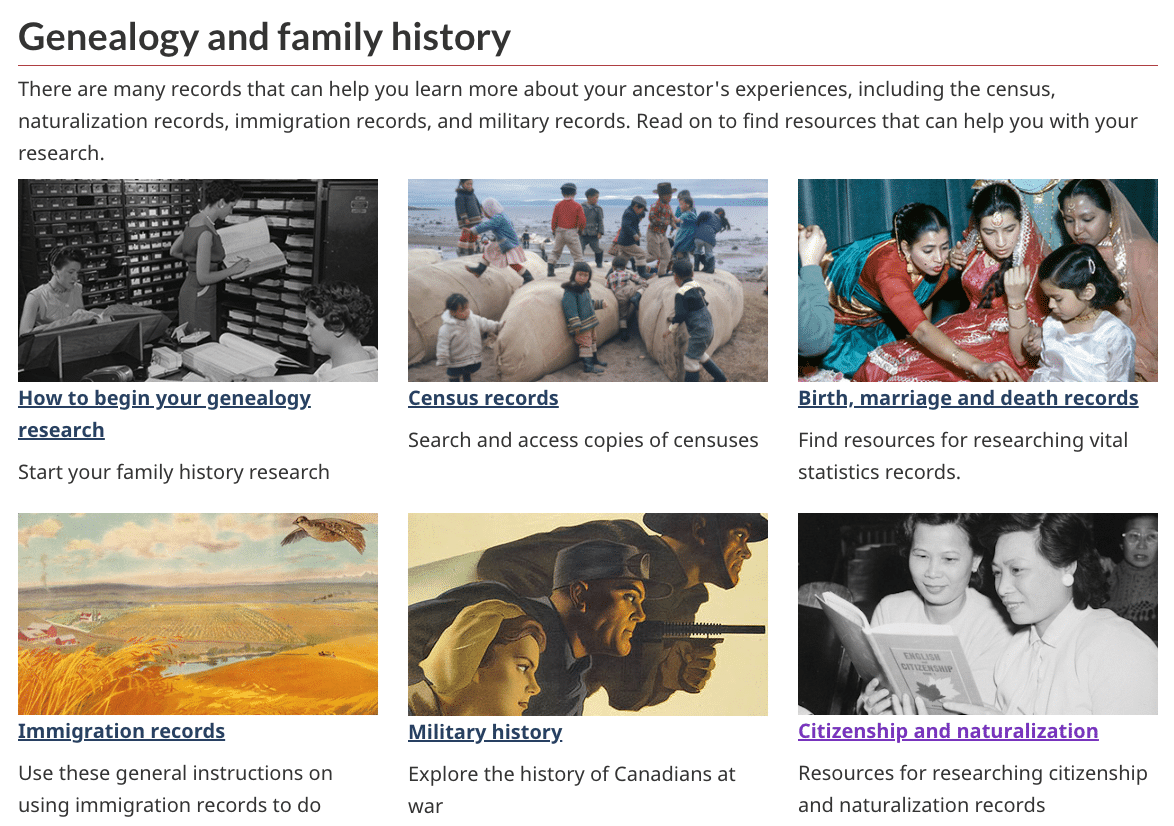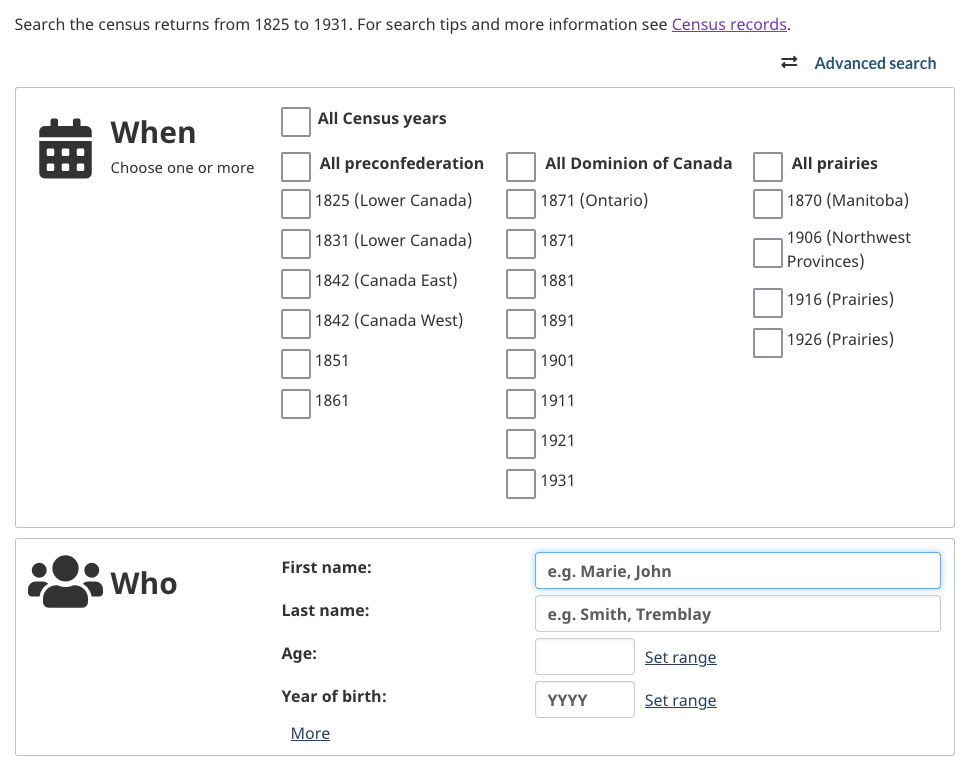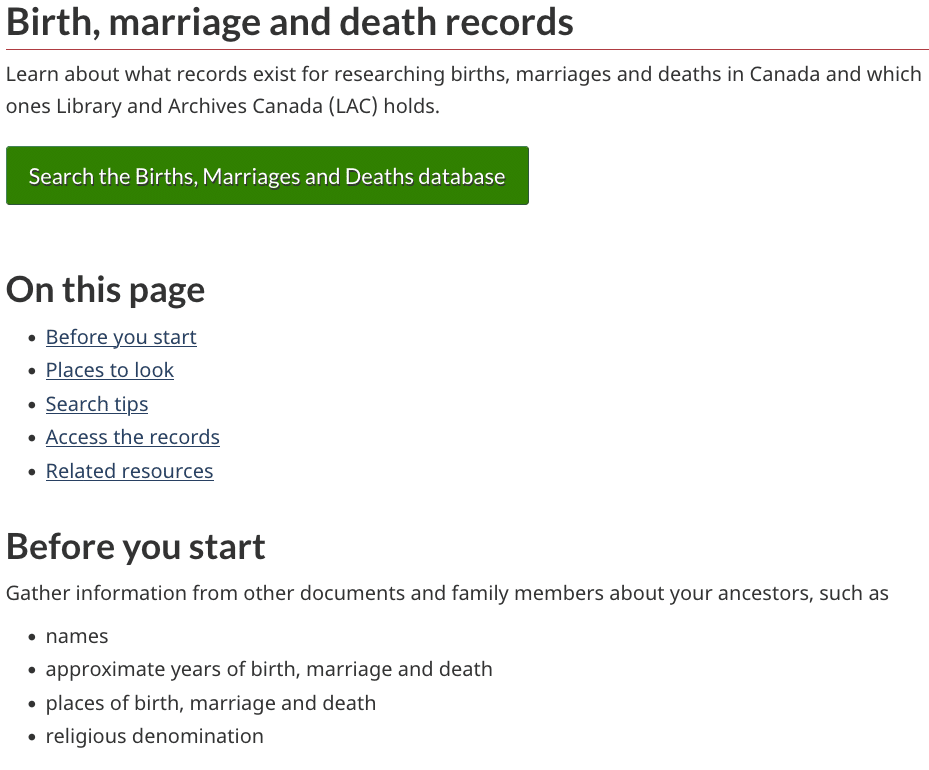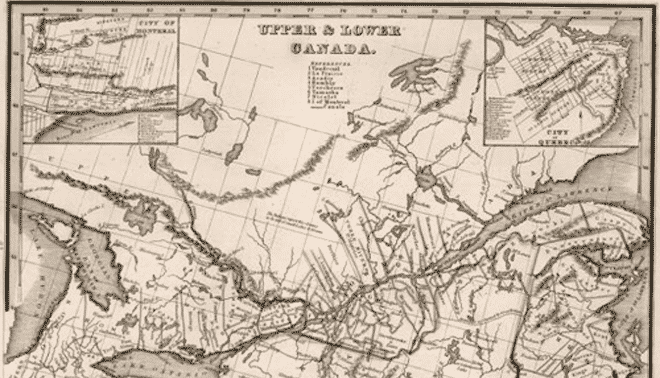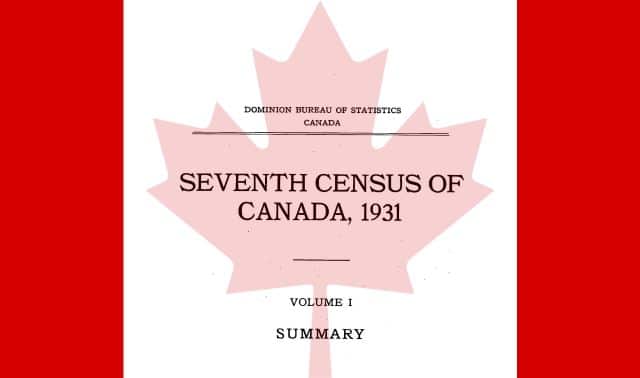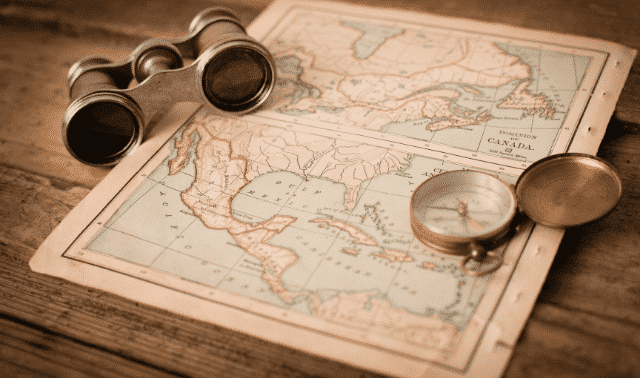Sign up for the Family Tree Newsletter! Plus, you’ll receive our 10 Essential Genealogy Research Forms PDF as a special thank you.
Get Your Free Genealogy Forms
"*" indicates required fields
Library and Archives Canada (LAC) is a free portal to the history of the “Great White North.” There you’ll find original government records, 30 million historical photos, 20 million books, research guides, and other materials from Canada’s national archives and library.
No wonder that the website—which has a dedicated link for “Genealogy and Family History” right on the home page—is a major destination for genealogists. Here’s how you can tap its resources.
1. Browse Genealogy Resources
Click Genealogy and Family History from the home page to see major resources organized by record type. LAC doesn’t necessarily hold all the records mentioned here, but you’ll usually find good directions and access information for those held by other institutions.
Click a heading to learn about each subject. “How to Begin Your Genealogy Research,” for example, has a helpful overview of research in Canada.
2. Delve into Record Guides
One such section is on census records, which has both how-to and historical information (definitions of the terminology, jurisdictions, and abbreviations used; guides to when and how the censuses were conducted; research tips; etc.) and a searchable database.
One portal takes you to “Early Census and Related Documents, 1640 to 1945.” The 271(!) additional collections here are local and provincial censuses and small or incomplete census lists. Note that keyword searches here will turn up the titles of collections, not names of individual people. Sort roughly by date, or click through to view transcripts and related resources.
3. Search Censuses
Click Census Search to access a name-search of pre-confederation censuses (1825 and 1831 for Lower Canada, 1842 for Canada East and West) and nationwide censuses (every 10 years from 1851 to 1931). The “Who” and “Where” sections offer additional filters under More. Explore results—including images—for free, and save records by creating a free login.
4. Learn About Vital Records and More
LAC also has a landing page for Birth, Marriage and Death Records, which links to a searchable collection of about 36,000 records. But don’t get too excited—most vital records were kept at the provincial level, and are available elsewhere. Still, this page is useful for learning about vital records created by other levels of government.
Back on the Genealogy page, you’ll also find links to Immigration Records (e.g., passenger lists, border-crossings, deportations, alien registrations, passport applications), Citizenship and Naturalization, and Military History (with links to individual conflicts and subjects). Find Family Tree‘s guide to Canadian immigrants here.
5. Read Detailed Research Guides
Scroll down on the LAC genealogy home page to the “Research Guides and Other Resources” section, which contains information on everything from Acadians to employment to land records. Use filters to drill down to specific topics, such as Indigenous History or (under sub-topic) Ethno-Cultural.
Browse these and even more guides at the LAC’s “A to Z” list. Genealogy-adjacent topics include directories, newspapers, and even postmaster records.
Related Reads
A version of this article appeared in the November/December 2024 issue of Family Tree Magazine.


